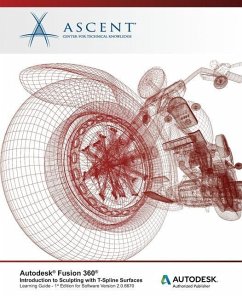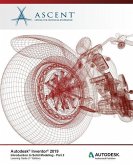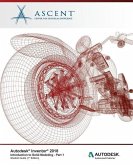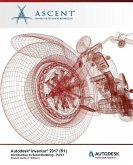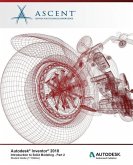The Autodesk(R) Fusion 360(R) software combines locally installed and cloud-based tools. It enables users to use parametric modeling and surface modeling techniques to create 3D designs. The Autodesk(R) Fusion 360(R): Introduction to Sculpting with T-Spline Surfaces guide focuses on surface modeling and how to effectively use the FORM contextual environment of the DESIGN workspace. Through a hands-on, practice-intensive curriculum, you will learn the key skills and knowledge required to create organic, highly shaped, and visually appealing models. Software Version As a cloud-based platform, updates are frequently available for the Autodesk Fusion 360 software. This guide has been developed using software version: 2.0.6670. If you are using a version of the software later than version 2.0.6670, you might notice some variances between images and workflows in this learning guide and the software that you are using. Topics Covered * Describing the differences between solid and T-Spline surface modeling. * Creating new projects, loading files into projects, and opening files for use in the Autodesk Fusion 360 software. * Using the Autodesk Fusion 360 interface, navigating a design, locating commands, and controlling a design's visual display. * Creating T-Spline surface geometry using the Box, Plane, Cylinder, Sphere, Torus, and Quadball quick shape tools. * Creating planar and non-planar flat surfaces. * Attaching a canvas image to a plane and using it to create T-Spline geometry. * Editing the shape of a T-Spline's control frame by manipulating its points, edges, and faces. * Assigning or clearing symmetry on T-Spline geometry. * Creating, constraining, and dimensioning 2D sketches. * Creating and using construction features in a design. * Creating extruded T-Spline geometry by extruding a sketch. * Creating revolved T-Spline geometry by revolving a sketch around a centerline. * Creating swept T-Spline geometry using appropriate path and profile entities. * Creating lofted T-Spline geometry using appropriate profile and reference entities. Prerequisites N/A
